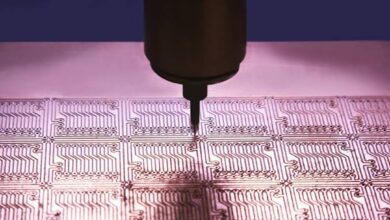Biometric Security: The Future of Home Access Control

Imagine stepping up to your front door, and it unlocks with a simple touch of your finger. No keys, no codes, just your unique biometric signature granting you access. This is the future of home access control, and it’s no longer the stuff of science fiction.
Let’s explore the fascinating world of biometric security and how it’s revolutionizing the way we protect our homes. Get ready to embrace the future of home access control.
What Is Biometric Security?
Biometrics refers to the measurement and statistical analysis of a person’s unique physical and behavioural characteristics.
Reliable security system Great Falls SC can include fingerprints, iris patterns, facial features, voice patterns, and even gait. Biometric security systems use these distinctive traits to verify a person’s identity.
Biometric Security in Your Home
You might be wondering how biometric security fits into your home. It’s all about enhancing access control, making your home more secure, convenient, and personalized. Here’s how biometrics is changing the home security:
Fingerprint Scanners
Fingerprint scanners have become the face of biometric security. You’ve likely seen them on modern smartphones, but they’re also making their way into homes. These scanners analyze the unique ridges and patterns of your fingerprints to grant or deny access. They’re incredibly accurate and fast, making them a practical choice for home security.
Facial Recognition
Facial recognition is a biometric technology that’s advancing rapidly. Cameras equipped with facial recognition software can identify individuals based on their facial features. Your home security system can recognize you and authorized individuals, instantly granting access upon recognition. The best part? It’s contactless, making it ideal for touch-free security.
Voice Recognition
Your voice is as unique as your fingerprint, and voice recognition technology is harnessing that uniqueness for home security. By analysing your vocal patterns and speech characteristics, your home system can confirm your identity. It’s a secure option, although it may not be as common as other biometric methods.
Hand Geometry
Hand geometry recognition analyses the size and shape of your hand, including the length and width of your fingers. It’s a straightforward and reliable biometric method that’s often used in industrial settings. While it may not be as common in homes, it’s worth considering for high-security areas.
Benefits of Biometric Home Access Control
Now that you have an overview of the various biometric methods, let’s explore why biometric home access control is gaining traction:
Unmatched Security
Biometric security is incredibly difficult to bypass. Unlike keys or PIN codes that can be lost or stolen, your biometric traits are uniquely yours. This makes your home more resistant to unauthorized access.
Convenience
No more fumbling for keys or trying to remember complex codes. Biometric access is seamless and quick. With a touch, a glance, or a few words, you can enter your home effortlessly.
User-Friendly
Biometric systems are designed to be user-friendly. They adapt to your unique traits, and the technology is becoming more intuitive and accessible.
Remote Access
Many biometric systems can be integrated with your smartphone, allowing you to control access to your home remotely. You can grant temporary access to guests or service providers, even when you’re not at home.





